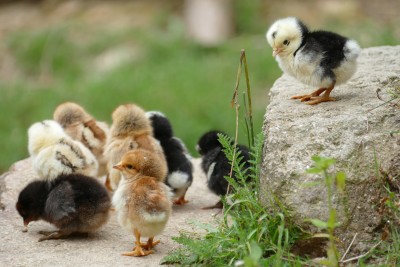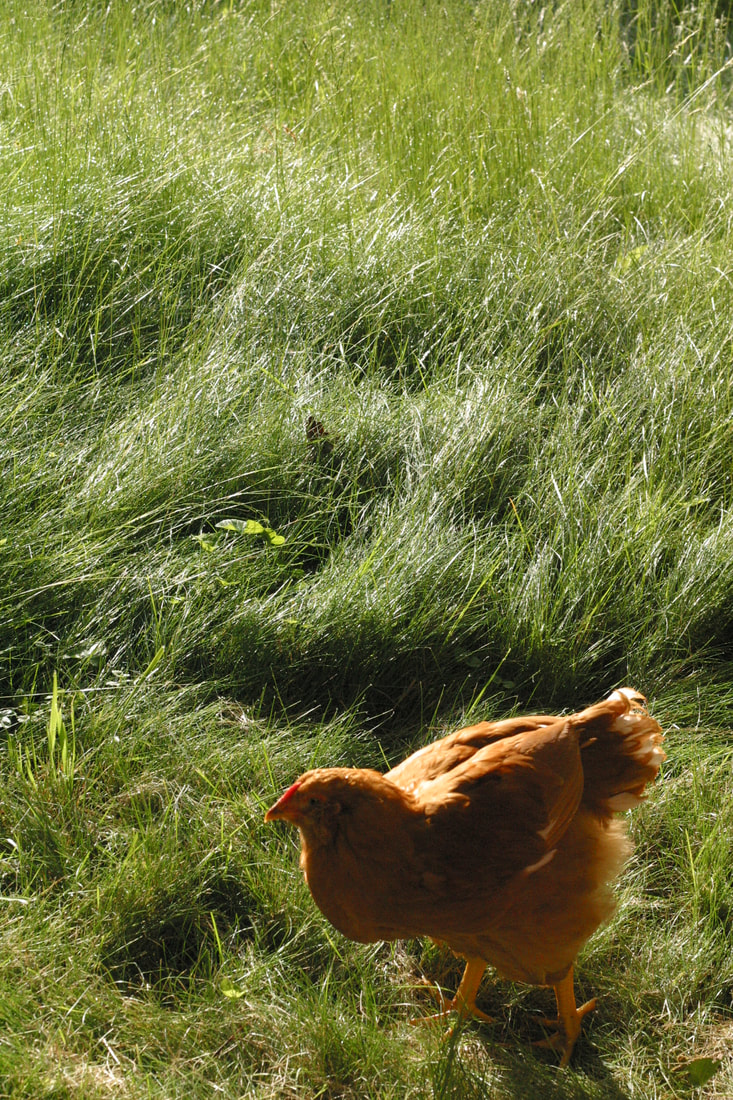Last Updated on April 23, 2025 by Pauline G. Carter
A straight run chicken is one that has not been sexed or separated by gender. This means that when you purchase straight run chickens, you will receive a mix of male and female chickens.
Straight run chickens are popular among those who are interested in raising their own flock as they provide an affordable option for starting out. However, it’s important to note that raising straight run chickens may result in a surplus of roosters, which can present challenges as they grow older and potentially become aggressive towards each other.
Despite this, many people enjoy the unpredictability and variety that straight run chickens offer.
What Are Straight Run Chickens?
A straight run chicken, also known as a non-sexed chicken, refers to a live baby chick that has not been specifically sexed or sorted by gender. Unlike sexed chicks that are identified as either males or females, straight run chicks have not undergone this process. They are sold as a mixed group without any guarantee of their gender. This can be an appealing option for those who are open to keeping a mixed flock or want to try their luck at hatching chicks naturally.
Definition Of Straight Run Chickens
A straight run chicken is an unsexed baby chick that has not been sorted or identified by gender. These chicks are sold as a mix, without any guarantee of their future gender.
How Are Straight Run Chickens Different From Sexed Chicks?
Sexed chicks are female or male chicks that have undergone a sorting process to identify their gender. This is typically done through visual or genetic methods, ensuring that customers receive chicks of a specific gender. Straight run chicks, on the other hand, have not been sexed and can be a mix of males and females.
In terms of availability, straight run chickens are usually more readily available than sexed chicks. This is because identifying the gender of a chick requires special expertise and equipment, making it a more time-consuming and expensive process. Therefore, those who are looking for a quick and easy way to begin their chicken flock may opt for straight run chicks.
| Straight Run Chickens | Sexed Chicks |
|---|---|
| Unsexed | Identified as Male or Female |
| Can be a mix of males and females | Guaranteed gender |
| Readily available | Require expertise and equipment for sorting |
When it comes to the advantages of straight run chickens, they provide an element of surprise for those interested in the natural hatching process. Straight run chicks have the potential to be hatched and raised as a mixed-gender flock. This can be an exciting experience for chicken enthusiasts who enjoy observing the unique behaviors and interactions between male and female chickens.
However, it is important to note that straight run chickens can pose a challenge for those who have specific needs or objectives for their flock. For example, if egg production is the primary goal, sexed pullets may be a more suitable option to ensure a higher number of hens. Additionally, keeping a mixed flock requires careful management to prevent potential issues related to aggression or mating behaviors.
Straight run chickens are non-sexed baby chicks sold as a mix of males and females. They offer a sense of unpredictability and natural hatching experience, but may not be ideal for specific flock goals. Considering the advantages and considerations of straight run chicks can help individuals make an informed decision when creating their chicken flock.

Credit: swnydlfc.cce.cornell.edu
Benefits Of Raising Straight Run Chickens
Straight run chickens, also known as unsexed chicks, offer numerous benefits to backyard chicken enthusiasts. These chickens are cost-effective, provide genetic diversity, and allow for natural selection. With no gender preference, they are a great choice for a self-sustaining flock.
Raising straight run chickens, also known as unsexed chickens, can offer a variety of benefits for poultry enthusiasts. Whether you’re a small-scale homesteader or an urban farmer, considering the option of raising straight run chickens can bring advantages to your flock. In this article, we will explore three key benefits that come with choosing straight run chickens: maintaining genetic diversity in the flock, cost savings, and the potential for extra meat or egg production.
Maintaining Genetic Diversity In The Flock
Maintaining genetic diversity is crucial for the long-term health and productivity of a chicken flock. When only selecting specific hens or roosters for breeding, the gene pool becomes limited, leading to inbreeding and a higher risk of health issues. By raising straight run chickens, you give nature the opportunity to select the strongest and healthiest birds for future breeding. This helps to maintain a diverse gene pool and ensures the production of robust and resilient offspring.
Cost Savings
Raising straight run chickens can be more cost-effective compared to purchasing sexed chicks or mature hens and roosters. When buying sexed chicks, you usually pay a premium for the certainty of getting female or male birds. However, with straight run chickens, you eliminate this added cost. While it comes with the uncertainty of not knowing the future sex ratio of your birds, it provides an opportunity to save money on chick purchases. Plus, selectively raising and keeping your own roosters can reduce or eliminate the need to purchase new birds in the future.
Extra Meat Or Egg Production
One of the exciting benefits of raising straight run chickens is the potential for additional meat or egg production. In a typical setting where chicks are purchased, males are often culled as they do not lay eggs and may not meet the desired meat standards. However, by raising straight run chickens, you have the chance to raise these extra males for meat, providing a valuable source of protein for your family. Additionally, if you decide to breed your straight run chickens later on, the surplus males can be used for meat production without interfering with the egg-laying activities of the females.
Challenges Of Raising Straight Run Chickens
A straight run chicken refers to a mixed flock of both male and female chicks. Raising straight run chickens can be challenging as it requires separate accommodations for different genders and managing potential aggression among males.
Unpredictable Gender Ratio
Raising straight run chickens comes with its share of challenges. One such challenge is dealing with the unpredictable gender ratio among the chicks. When you purchase straight run chickens, you have no control over their gender. This means that you may end up with more roosters than hens, or vice versa. Lack of control over the gender ratio can create difficulties for those specifically looking to either breed chickens or have a flock primarily for egg production.
Potential Aggression And Social Dynamics
Another challenge of raising straight run chickens is the potential for aggression and changes in social dynamics within the flock. As the chicks mature, roosters may exhibit aggressive behavior towards each other and even towards hens. They can become territorial and may engage in fights to establish dominance. This aggression can disrupt the peaceful environment of your chicken coop and lead to injuries and stress among the birds.
Limited Availability
When it comes to straight run chickens, limited availability is yet another challenge. Many hatcheries and suppliers do not offer straight run chickens regularly. This means that if you have a specific timeframe in mind for adding chicks to your flock, you may have to wait until straight run chickens become available. Additionally, the limited availability can make it harder to find a specific breed or variety of chicken as straight run, forcing you to compromise on your preferences.
To summarize, raising straight run chickens comes with its own set of challenges. The unpredictable gender ratio can affect your breeding or egg production plans. Dealing with potential aggression and social dynamics among roosters and hens can disrupt the harmony of your flock. Lastly, the limited availability of straight run chickens can make it challenging to find the exact breed or variety you desire for your chicken coop. By being aware of these challenges, you can carefully consider whether raising straight run chickens is the right choice for you.

Credit: www.thesilverfoxfarm.com
Tips For Raising Straight Run Chickens
When it comes to raising straight run chickens, there are a few key considerations to keep in mind. From creating adequate housing and nesting spaces to deciding whether to introduce a rooster or not, and preparing for butchering or rehoming excess roosters – each aspect plays a crucial role in successfully raising straight run chickens. In this blog post, we will explore these tips in detail to help you navigate the world of straight run chickens.
Creating Adequate Housing And Nesting Spaces
Proper housing and nesting spaces are essential for the health and well-being of your straight run chickens. Here are some tips to ensure they have a comfortable environment:
- Provide sufficient space: Each chicken should have at least 4 square feet of space in the coop, and the run area should have at least 10 square feet per chicken to ensure they have enough room to move around.
- Ensure proper ventilation: Good airflow is crucial to prevent the buildup of harmful gases and maintain a fresh environment for your chickens. Install vents and windows in the coop, and clean them regularly to keep the air circulating.
- Create nesting boxes: Chickens need a safe and secure place to lay their eggs. Designate nesting boxes that are raised off the ground and provide enough privacy. Aim for one nesting box per 3-4 hens.
- Use suitable bedding: Provide clean and dry bedding material such as straw, wood shavings, or dried leaves in the nesting boxes and coop floor to absorb moisture and keep your chickens comfortable.
Introducing A Rooster Or Not
Deciding whether to introduce a rooster to your flock of straight run chickens is a personal preference. Here are a few things to consider when making your decision:
- Natural flock behavior: Having a rooster can provide a natural hierarchy and enhance the social dynamics among the chickens. Roosters can protect the flock and provide a sense of security.
- Egg fertilization: If you want to breed chickens and have fertilized eggs, keeping a rooster is necessary. However, if you’re mainly focused on egg production and don’t want any potential conflicts or noise concerns, it may be best to stick with only hens.
- Local regulations and restrictions: Check your local ordinances or regulations to ensure that keeping roosters is permitted in your area. Some neighborhoods may have specific rules limiting or prohibiting roosters due to noise concerns.
Preparing For Butchering Or Rehoming Excess Roosters
When raising straight run chickens, it’s common to end up with excess roosters that you may need to butcher or rehome. Here are some tips to help you prepare for this situation:
- Research local regulations: Understand the local laws regarding butchering chickens or keeping them as pets. Ensure you comply with any regulations and obtain necessary permits or licenses.
- Sustainable and humane practices: If you plan to butcher excess roosters yourself, learn proper techniques to ensure humane and ethical treatment. Alternatively, consider rehoming them to farms, homesteaders, or other individuals seeking roosters.
- Plan ahead: Have a plan in place before the time comes to deal with excess roosters. This will help you avoid unnecessary stress and ensure the process is handled smoothly and responsibly.
- Connect with local networks: Engage with local chicken-keeping communities, social media groups, or agricultural organizations to find potential homes or resources for rehoming your excess roosters.
Credit: www.backyardchickens.com
Frequently Asked Questions On What Is A Straight Run Chicken?
What Does Straight Run In Chickens Mean?
Straight run in chickens refers to a group of newly hatched chicks that haven’t been sexed or sorted. These chicks can be either male or female, so there is an equal chance of getting roosters or hens.
How Can You Tell If A Straight Run Chicken Is Male Or Female?
Straight run chickens cannot be determined as male or female until they mature, usually around 6-8 weeks when visual differences in comb and feather development become apparent.
What Is A Pullet Chicken?
A pullet chicken is a young female chicken that is less than one year old. These chickens are not mature enough to lay eggs.
What Are The 3 Types Of Chicken?
The three types of chicken are broiler chickens, laying hens, and heritage chickens. Broilers are raised for meat, laying hens produce eggs, and heritage chickens are traditional breeds with historical significance.
What Is A Straight Run Chicken?
A straight run chicken is a non-sexed chicken that has not been separated by gender at hatching.
Conclusion
A straight run chicken refers to a group of chicks that includes both males and females. This means that you will receive a mix of roosters and hens. Understanding what a straight run chicken is can help you make informed decisions when it comes to raising and managing your flock.
By considering the specific needs and characteristics of straight run chickens, you can ensure a successful and thriving poultry operation.

